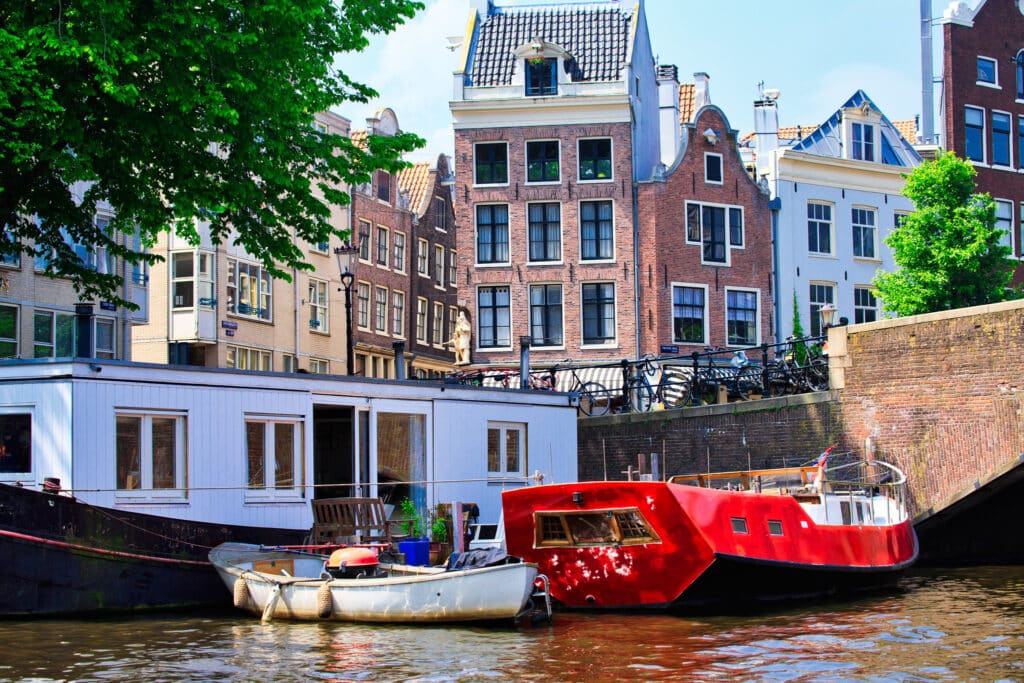L'history of Amsterdam goes back many centuries.
Legend has it that two fishermen found the city of Amsterdam by chance.
However, the town began to appear in 1275.
Today, we're going back in time in search of Amsterdam's history!
The history of Amsterdam: article summary
In the beginning, there was a river
The heart of Amsterdam is the Dam. In the 13th century, the dam was born on the Amstel river. The town's name was born. The first "Amsterdammers" were fishermen and merchants who obtained freedom of tolls.
The city then prospered as a commercial center. The Amsterdam coat of arms also date from this period.

Amsterdam's golden age
The city grew quite rapidly, and around 1613 the digging of the three main canals began. After the Spanish conquest of Antwerp in 1685, Amsterdam was and one of the richest cities in the world.
During this time, it was also considered the region's main financial center. A position it held until around 1700. After the 80 Years' War with Spain, many people were drawn to Amsterdam, then known as the "capital of Europe". for its relative religious tolerance.
Jews from Spain and Portugal, Huguenots from France and economic and religious refugees found refuge in Amsterdam. This migratory movement attracted a large number of artists from all over the world.
History of Amsterdam: a golden age
The 17th century is considered Amsterdam's golden age. Amsterdam merchants held the lion's share of the Dutch East India Company and the Dutch West India Company.
That's why Amsterdam grew rich for almost 200 years, establishing trade links all over the world. The reflection of this prosperity can be seen in the construction of monumental architectural masterpieces.
After the French invasion, Napoleon Bonaparte founded the Kingdom of Holland in 1806, and his brother became King of Holland in 1810. The country's population revolted against this decision. At the Congress of Vienna in 1813, the Netherlands became a monarchy.
After the recession, Amsterdam recovered during the Industrial Revolution and expanded. The North Sea Canal was dug, linking the port of Amsterdam to the North Sea. This canal was a positive development for the Dutch economy.
The Second World War
In 1940, the Germans invaded the Netherlands. Many lives were taken due to famine and the deportation of Jews to Nazi concentration camps.
After the Second World War many new suburbs have been built around Amsterdam. Society has changed, with many people moving to the suburbs. At the same time, the population has increased due to the arrival of many Surinamese, Turkish and Moroccan immigrants.
Amsterdam today
Amsterdam's city center has been restored, and the process is still ongoing. Many of its buildings have become monuments that tourists visit today. In July 2010, the 3 main canals (Herengracht, Keizersgracht and Prinsengracht) join the UNESCO World Heritage List.
Over the centuries, Amsterdam has developed into the city we know today. It is now a popular city that attracts many tourists every year. Here, you can see the marks of the past and enjoy the re-enactments that are very present in the city. It's a way for the people of Amsterdam to show their city's commitment to the future. to rank among the best cities in the world.
What to do in Amsterdam in 1 day, 2 days, 3 days, 5 days, a week?
Whatever the length of your stay, I invite you to download my special Amsterdam guide.
It's free and in PDF format.
All you have to do is tell me below which e-mail address you'd like to receive it at.
EDIT: you can't enter your email?
Take the quiz at the top of this article and you'll be able to register your email address to receive the special Amsterdam guide!
Leave a Reply